Proofreading is a very slow and meticulous process. It demands a whole lot of patience and concentration. Very often, the proofreader is the last person to check a text for any errors, so if they overlook a typo or grammatical mistake, that error is likely to end up being published to thousands—if not millions—of readers.
To help you avoid this happening, we’ve made a list of 10 handy proofreading tips that will improve the quality of your proofreading by ironing out some common mistakes and bad habits that can affect your work.
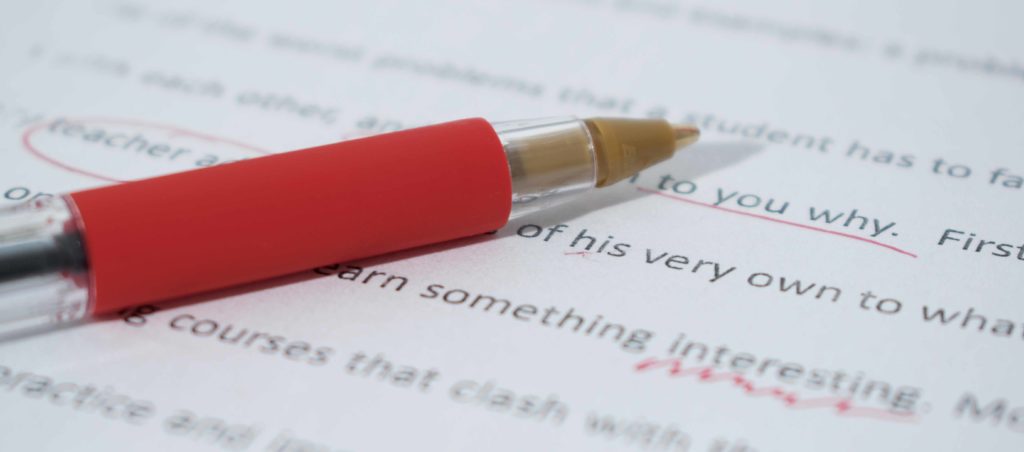
1. Slow Down
Most adults read at a pace of around 200 to 250 words per minute. Although this might feel comfortable for general comprehension, that speed is far too fast for proofreading. Take a look at the following paragraph:
Evne thoguh tihs paargrpah is bdly writen amd fil of mitskaes, yuo acn prbobaly stll mkae snse of whut te wrods maen. Ths si a bgi prbolem fr prufredaers, becose ti maens taht thye mgiht ovrelook an aesy msitake.
Even though the example above is a complete mess, your brain is still able to decipher what the meaning is supposed to be with very little effort. It automatically fixes the writer’s mistakes so that it makes sense in your own head as you read it.
To be a good proofreader, you need to stop your brain from automatically fixing these errors. You can achieve this by slowing down how fast you read and really focusing on one word at a time and making sure that its spelling matches its intended meaning.
2. Read Aloud
One of the best ways to make sure you slow down and examine one word at a time is to read the text aloud. Of course, this isn’t always possible if you’re sharing the space with other people, but you can still say the word “aloud” in your thoughts.
This will help to prevent an easy typo from slipping under your radar by making sure that your eyes don’t skip ahead or gloss over any words.
3. Don’t Multitask
There are many different aspects of a text that need to be checked by a proofreader, from grammar and typos to paragraph indents and running heads. As such, it can be very tempting to try to tackle all of these elements at the same time. However, this is never a good idea. When you try to juggle too many things simultaneously, you will inevitably overlook one of them, allowing mistakes to creep in.
The best approach is to single out large elements that need to be checked, and then to focus on those one at a time. For example, if you’re checking the proofs of a book, do a pass that only examines the running heads. Then do a pass that only looks at the page numbers. By organizing your proofread into focused chunks, you will lower your chances of overlooking something important.
4. Take Breaks
Proofreading takes an enormous amount of concentration. Unfortunately, it’s very easy to let yourself slip into autopilot when you’ve been reading a text for a long time, and this is when you’ll fail to spot mistakes in the writing.
To make sure that you don’t fall into this trap, always take regular breaks while proofreading to rest your eyes and to let your mind wander for a little bit. That way, when you sit back down to carry on, you will be better able to focus properly on the task at hand.
5. Find a Fresh Pair of Eyes
 As a general rule, a writer should always try to avoid being the only person to proofread their work. This is because they are too familiar with the language and their brain simply won’t see certain mistakes. Or there might be a particular aspect of grammar that they struggle with (or aren’t even aware of), and so their own proofreading attempts won’t rectify those issues.
As a general rule, a writer should always try to avoid being the only person to proofread their work. This is because they are too familiar with the language and their brain simply won’t see certain mistakes. Or there might be a particular aspect of grammar that they struggle with (or aren’t even aware of), and so their own proofreading attempts won’t rectify those issues.
The same applies to editing. Proofreading and editing are two very different tasks, and an editor should avoid having the dual task of proofreading.
When a piece of writing is finished, have an editor work on it. And when the editing process is finished, let a proofreader check it for errors. Don’t let one person have multiple roles, even if they are very experienced.
6. Guide Your Line of Sight
While you’re reading, there are steps you can take to avoid letting your eyes gloss over words or skip ahead. One of the best ways to do this is to guide your line of sight.
If you’re working on hard copy, you can place a ruler beneath your current sentence to keep it in focus, and slowly move from one word to the next with your fingertip or the back of your pen or pencil.
And if you’re reading digitally, you can guide your eyes and set a deliberate pace by moving the cursor from word to word as you read, making sure that each one receives your full attention.
7. Avoid Noise
Writing, editing, and proofreading usually involve long stretches of sitting in a quiet room, so it can feel very tempting to break that silence with a bit of music or TV in the background. However, this can have a negative affect on your work in a number of ways.
In addition to causing your mind to wander, any words you hear from another source will mix with the ones you are reading, and your brain will slip into autopilot mode to automatically fix any mistakes that you see in the writing.
To maintain your focus, it’s best to avoid listening to any music that has lyrics. However, if you’re someone who works better with a bit of background noise, then rather opt for instrumental music (a playlist of nature sounds can also work well, like rainfall or waves washing up on the shore).
8. Keep a Style Sheet
One of the most important resources for a proofreader is their style sheet. This is a document that lists any style and spelling decisions that have been made and which need to be adhered to throughout the text.
If you’re proofreading for an editor, it’s a good idea to ask them if they kept a style sheet so that you don’t inadvertently undo any spelling or stylistic decisions that they made in the text. But even if they didn’t keep a style sheet, the proofreader should still make their own in order to make sure that the language stays consistent. You might think you can deal with spelling and style issues as they arise, but it’s extremely common for a proofreader to need to revise a particular decision, and this can have a much larger domino effect.
Remember: the language in a text needs to be consistent, and a style sheet is your best way to guarantee this.
9. Pause to Think
When you’re proofreading (or editing), never make changes without pausing to think for a few moments. Consider if the change is truly important and whether it might be a deliberate choice by the editor or writer.
Certain mechanical errors (like obvious typos and misplaced punctuation) are usually safe to correct directly, but sometimes the issue is debatable. In cases where you aren’t entirely sure, don’t simply make the change that you think is right: rather raise a query with the editor or writer to see what they have to say about the issue.
One of the worst things a proofreader can do is introduce errors into the text, and making stylistic decisions without consulting the people responsible for how the language reads is a common way that proofreaders overstep their role and responsibilities.
When working as a proofreader, stop to think before you make a change to the text, and query anything that encroaches on editorial territory.
10. Check the Small & Big Details
A proofreader mustn’t just focus on the small details (the individual words and punctuation marks) and forget all about the big picture (how those small details form the larger work, and how that work is meant to be presented).
Don’t just look at the individual letters of each word: you must also reread the sentence as a whole to make sure that its grammar is also correct. Often, when you read a text one letter at a time, you can miss a grammatical mistake in the sentence because you aren’t focused on the big picture and lose a bit of the context of what you’re reading as a result.
If time allows, do one read-through where you focus specifically on the small details (such as spelling and punctuation), and a second read-through that focuses more on broader issues (like sentence structure). This will go a long way to making sure that the language is as error-free as possible!
Extra Resources
Improve your proofreading and editing skills with our collection of the best books and guides around. Whether you’re a writer, editor, or proofreader, the insights they offer will keep you up to date with the latest industry rules and conventions!
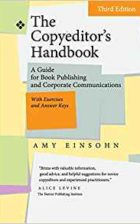
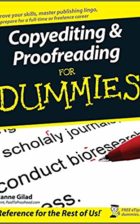
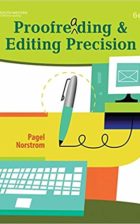
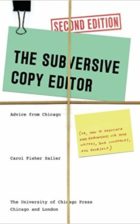
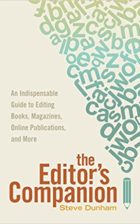
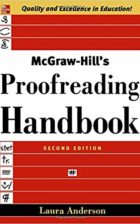
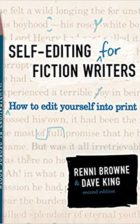

This is really helpful, thanks! Proofreading is something I’ve always struggled with, and some of these tips will definitely help me 🙂
Hi Justine,
It’s a pleasure. We’re glad to help!
I don’t know if I’ve got the patience for proofreading…I get distracted pretty easily when it’s too quiet.
Hi Kyle,
A lot of people find it easier to concentrate when there’s some sort of background noise. If that’s the case for you, we recommend listening to instrumental music or ambient sounds – anything without lyrics. It should help you to stay focused for longer without being disruptive.
It’s crazy how much our brains get in the way by being too helpful and fixing things without us noticing.
Are there any books you can recommend for a beginner who wants to get into professional proofreading?
Hi Logan,
Sure! We’ve got a full section on the best books available for anyone looking to become a proofreader or editor. You can check it out here: Resources for Proofreading & Editing.
Thanks – that’s a big help. I’ll check it out.
How much does proofreading overlap with copy editing (in term of a newbie starting out)? Should I learn the conventions for both?
Although they’re both very different disciplines, both editing and proofreading require a strong understanding of grammar, publishing, and general editorial conventions, so there is quite a lot of important overlapping. Very often, freelancers will juggle projects for both: editing one work while proofreading another.
Admiring the persistence you put into your site and detailed information you present. It’s great to come across a blog every once in a while that isn’t the same outdated rehashed material. Wonderful read! I’ve saved your site and I’m adding your RSS feeds to my Google account.
Some truly rattling work on behalf of the owner of this site, perfectly great written content.
Everything is very open and very clear explanation of issues. was truly information. Your website is very useful. Thanks for sharing.
I was studying some of your articles on this site and I conceive this internet site is very instructive! Retain putting up.
Sweet web site, super style and design, real clean and employ genial.
We’re a group of volunteers and starting a new scheme in our community. Your web site offered us with valuable information to work on. You’ve done an impressive job and our whole community will be grateful to you.